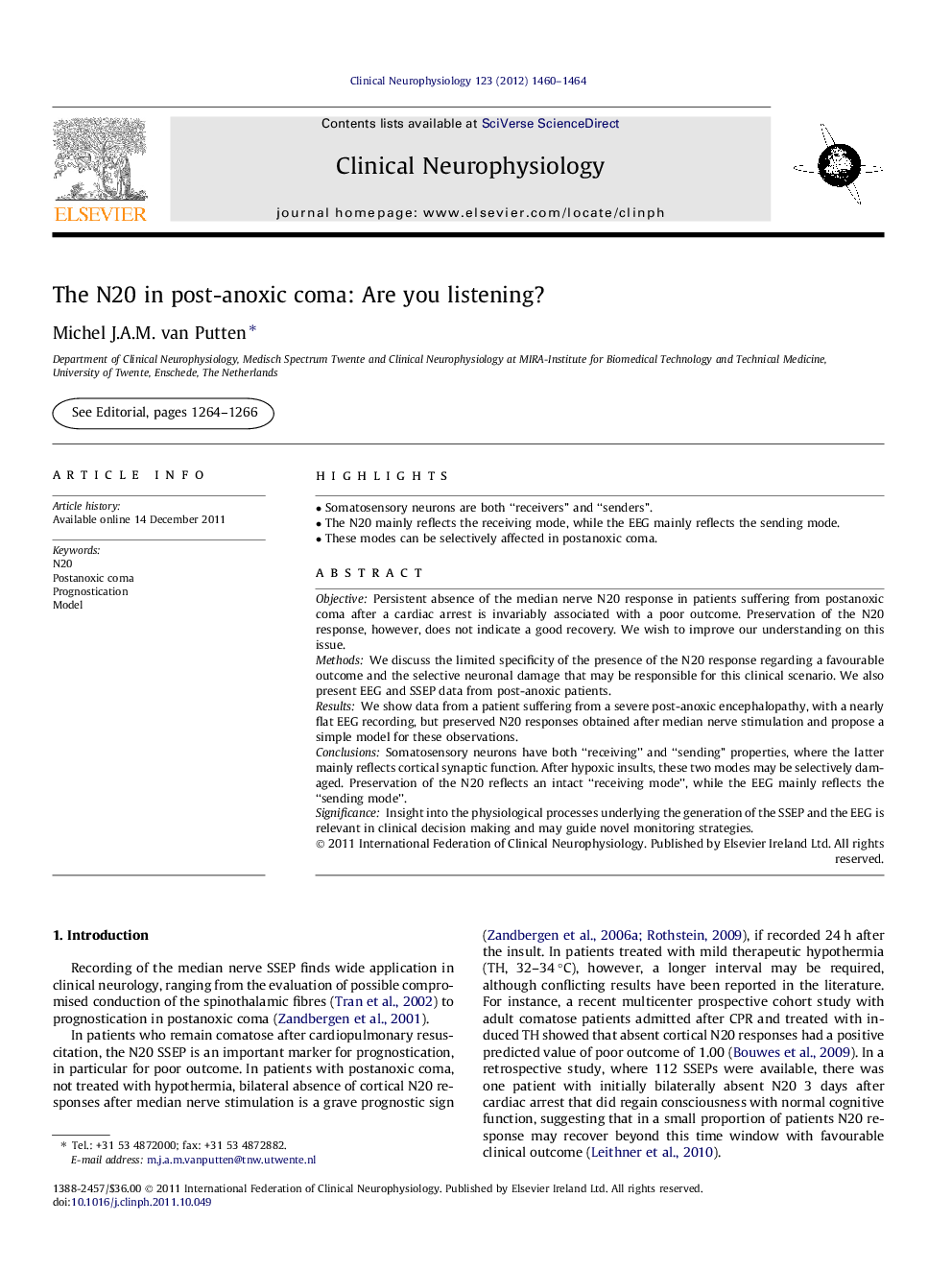| Article ID | Journal | Published Year | Pages | File Type |
|---|---|---|---|---|
| 3045512 | Clinical Neurophysiology | 2012 | 5 Pages |
ObjectivePersistent absence of the median nerve N20 response in patients suffering from postanoxic coma after a cardiac arrest is invariably associated with a poor outcome. Preservation of the N20 response, however, does not indicate a good recovery. We wish to improve our understanding on this issue.MethodsWe discuss the limited specificity of the presence of the N20 response regarding a favourable outcome and the selective neuronal damage that may be responsible for this clinical scenario. We also present EEG and SSEP data from post-anoxic patients.ResultsWe show data from a patient suffering from a severe post-anoxic encephalopathy, with a nearly flat EEG recording, but preserved N20 responses obtained after median nerve stimulation and propose a simple model for these observations.ConclusionsSomatosensory neurons have both “receiving” and “sending” properties, where the latter mainly reflects cortical synaptic function. After hypoxic insults, these two modes may be selectively damaged. Preservation of the N20 reflects an intact “receiving mode”, while the EEG mainly reflects the “sending mode”.SignificanceInsight into the physiological processes underlying the generation of the SSEP and the EEG is relevant in clinical decision making and may guide novel monitoring strategies.
► Somatosensory neurons are both “receivers” and “senders”. ► The N20 mainly reflects the receiving mode, while the EEG mainly reflects the sending mode. ► These modes can be selectively affected in postanoxic coma.
